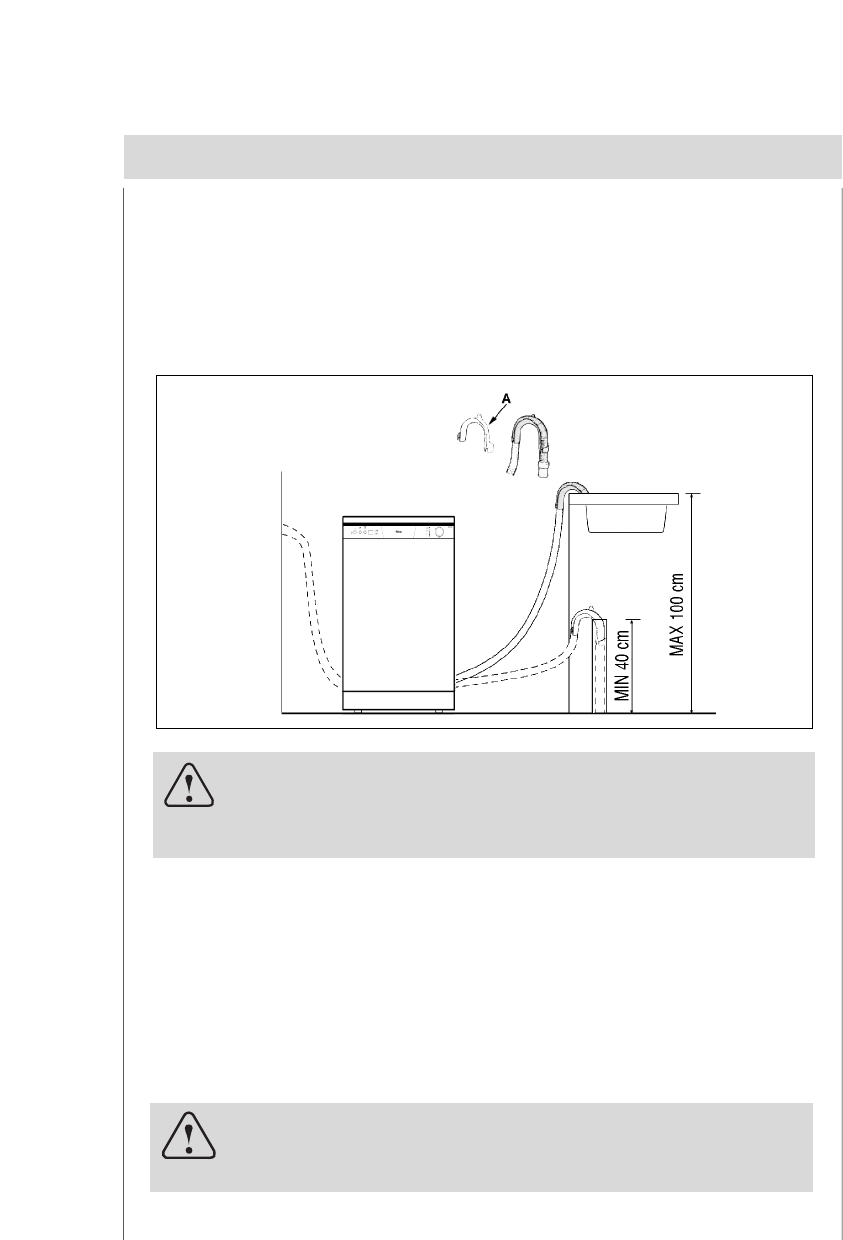
5
Electrical Connection
After making sure that the voltage and frequency values for the current in the home correspond to those
on the rating plate (located on the stainless steel inner door of the appliance) and that the electrical
system is correct for the maximum voltage on the rating plate, insert the plug into an electrical socket
which is earthed properly (the earthing of the appliance is a safety requirement mandated by law).
If the electrical socket to which the appliance must be connected is not appropriate for the plug, replace
the whole cable, rather than using adaptors or the like as they could cause overheating and burns.
Caution:
The dishwasher plug must be accessible even when the appliance
is installed as a built-in unit so that maintenance can be done safely.
Drain hose connection
Insert the drain hose into a drain pipe with a minimum diameter of 4cm, or let it run into the sink, making
sure to avoid bending or crimping it. If necessary, fit a syphon trap (U-bend) with a connecting piece for
the drain hose (fig.C). The free end of the hose must be at a height between 40 and 100 cm and must not
be immersed in water.
Attention:
The connecting piece for syphon trap (U-bend) must be solidly fas-
tened to the wall to prevent the drain hose from moving and allow-
ing water to spill outside the drain.
fig.C
en


















